- Home
- 14 Ways to Repair, Treat and Fix Damaged Hair
14 Ways to Repair, Treat and Fix Damaged Hair
A lady with long lustrous hair
Bad hair days are dreaded and for good reason. It is not just that they can make you look disheveled but they also tend to ruin your mood. To be fair, it is hard to feel upbeat when you are not exactly looking your best.
When your hair is weak and damaged, you are likely to suffer through bad hair days more often. In such a state, your hair requires frequent styling to stay neat. Even then, split ends, dryness, or breakage may rain on your parade from time to time.
You are probably wondering if there is a way to get your hair looking luscious and healthy again. Is it time to literally cut your losses and go for a big chop? Before your reach for the scissors in frustration, read on for some tips on how to salvage your hair crisis.
Swim and Sun With Care
Lounging in the sun and swimming tend to go hand in hand. While there is no denying that a good dip in the pool is quite refreshing, it poses some risks to your hair. As such, it is essential that you take precautions to protect your hair against:
Chlorine Damage
A lady swimming in a pool
In order to kill bacteria, pools are treated with chlorine which is a strong chemical with astringent qualities. It can sap out the natural oils in your hair leaving it brittle and deprived. Some people may even experience a certain degree of bleaching which is also one of the effects of chlorine.
Swimming caps are a great way to protect your hair from direct exposure to chlorinated water. That said, ensure to get a proper fit that is both comfortable and able to accommodate your hair. For double insurance, you can apply either a leave-in conditioner or some hair oil. They serve as a layer of protection against the water should it still sip into your cap.
It is also advisable to wash your hair with chlorine removal shampoo after a swim. Your ordinary shampoo may get your hair clean but may still leave remnants of chlorine which may result in more significant damage.
UV Rays
A person wearing a sun hat at the beach
The effects of the sun’s UV rays are well-documented but it is emerging that they are not just limited to the skin. Keratin is a protein which encapsulates and protects your hair cuticles from various elements. When your hair is damaged, it is likely that your keratin layer is ailing too. This leaves the hair cuticle susceptible to drying and bleaching by the sun.
Consider protecting your tresses by lounging under outdoor shades like umbrellas. Alternatively, you can dress up in summer hats and trendy scarfs during hot weather. In either scenario, always keep your hair moisturized.
Handle Wet Hair With Care
When your hair is wet, it is very pliable but it is also very vulnerable. While it may seem easier to comb it out before it dries and tangles, it is important that you do so with great care. Some of the key steps to be cautious about include:
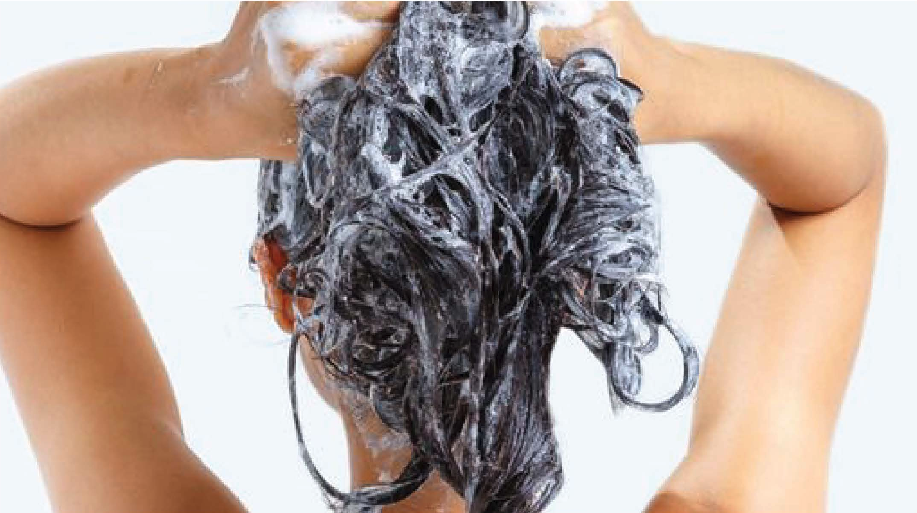
The Wash
A person washing their hair
Caring for your wet hair begins during the wash. Ensure to detangle your mane before you get to shampooing it. It will be much harder to handle it after washing if you skip this step. To prevent breakage, you can use detangling products or good old conditioner. Further, for all steps during the wash, a wide-tooth comb is preferable.

Drying
A lady wraps her hair in a white cloth
You certainly don’t want to go around with dripping wet hair hence the need for drying methods. However, keep in mind some key pointers such as:
Use patting motions instead of rubbing your hair; friction easily breaks wet hair
Use a clean cotton cloth to wrap your hair instead of a towel due to its rough fibers
Blow-dry using low heat
Avoid using curling irons and straighteners on wet hair
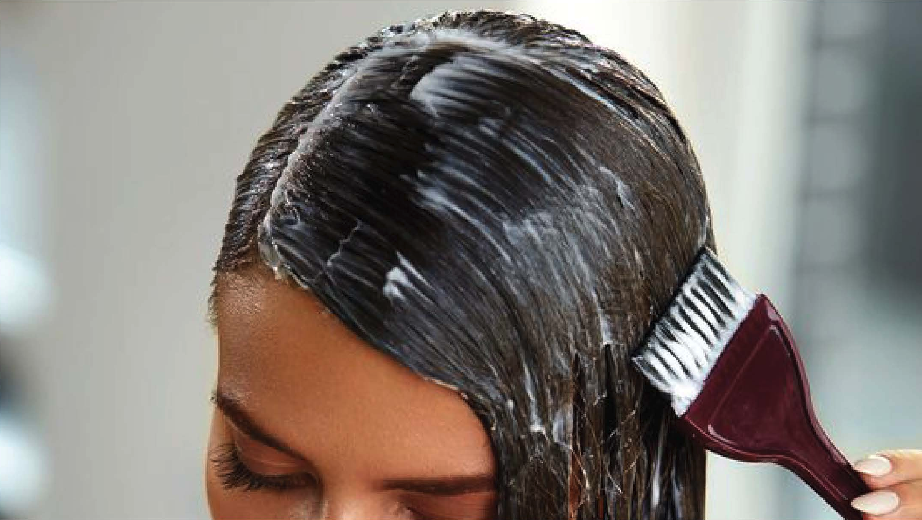
Indulge in Rich and Healing Hair Masks
A lady applies hair product using a brush
Think of hair masks as a healing balm for weak hair. They are laden with ingredients to replenish your tresses with moisture and natural oils. You can almost hear your hair give a sigh of relief as you nourish it with a hair mask. Nevertheless, for the best results, you need to pick the right product and also use it correctly. Let’s delve into that, shall we?
The Ingredients
Natural hair mask ingredients
As you choose between hair masks from different brands, keep an eye on the ingredients. The more natural components a mask has, the better. Natural oils such as jojoba oil, tea tree oil, almond or avocado oil are highly recommended. They are bound to restore your hair from dry and frail to a more lustrous sheen. Yogurt is also a great ingredient as it contains lactic acid which has antifungal properties to combat issues like dandruff.
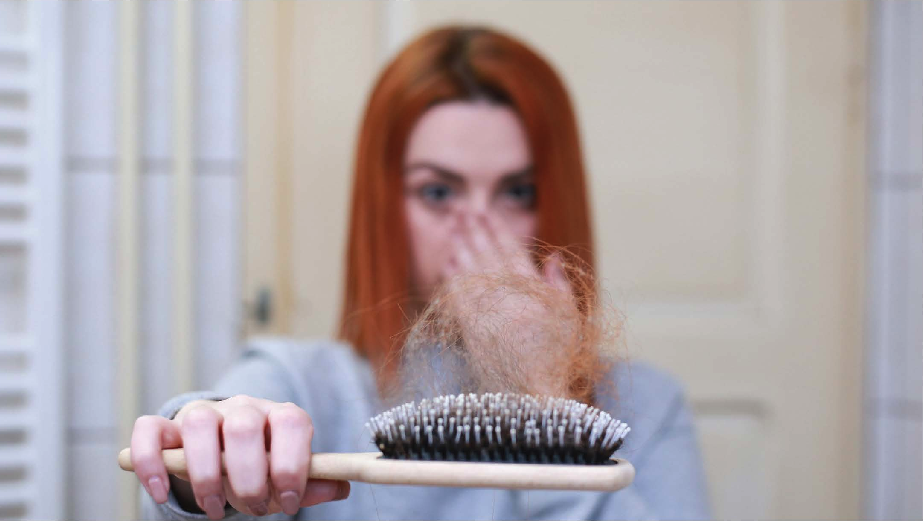
What Does Your Hair Need?
A lady holds out a brush with hair on it
There are different types of masks for various hair needs. If, for instance, you are looking for a moisture boost, there are masks that can help you achieve that. Others are made for repairing colored hair while some are made to aid with volume.
Assessing your hair needs before you go shopping for a mask will help you make the right choice. You could also seek a professional hair dresser’s opinion.
How to Properly Use Hair Masks
In terms of frequency, consider using a hair mask at least once a week especially in the hair repair phase. After your normal wash procedure, pat your hair dry to rid it of excess water then apply the hair mask. Massage the product gently onto the roots of your hair and ensure that your ends are coated in it too.
When the recommended time indicated on the hair mask product lapses, you can proceed to thoroughly rinse it out. Keep rinsing until the water running through your hair runs clear then you will be good to go.
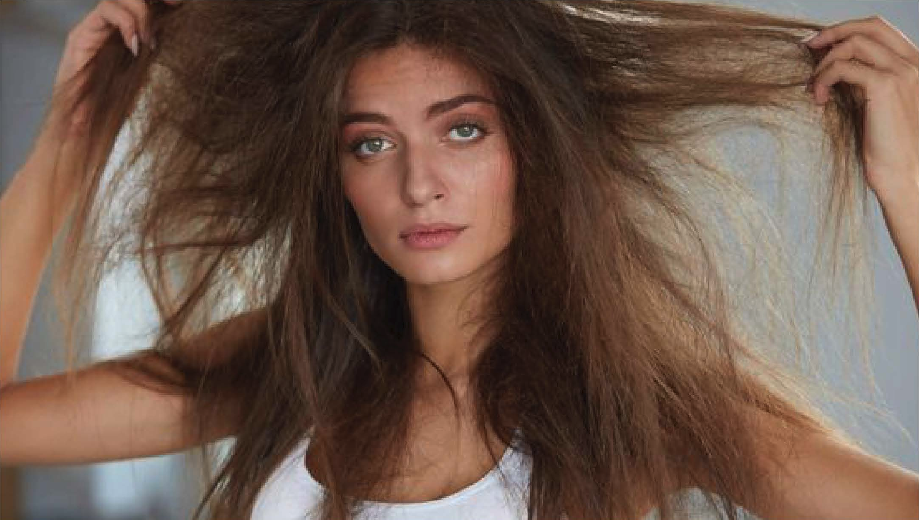
Do Not Let Your Hair Get Thirsty
A lady holds up strands of dry brittle hair
It is easy to notice when your hair is dehydrated. It loses sheen, breaks easily, and dries up really fast after washing. It may also look and feel more coarse than usual. All these factors put together are likely to make maintaining your hair difficult and frustrating.
The first line of defense against dryness is to avoid procedures that over-dry your hair. After coloring and adding highlights to your mane, for example, you may notice that it is less supple than before. Relaxers with calcium hydroxide are equally desiccating to both your scalp and hair strands.
If your heart is set on such processes, commit to making up for all the moisture your hair loses to them. Aside from hair masks and hair treatments, everyday oils and hair foods are a good way to infuse your tresses with moisture. The goal is not to pile on too much product but to be consistent with applications between washes.
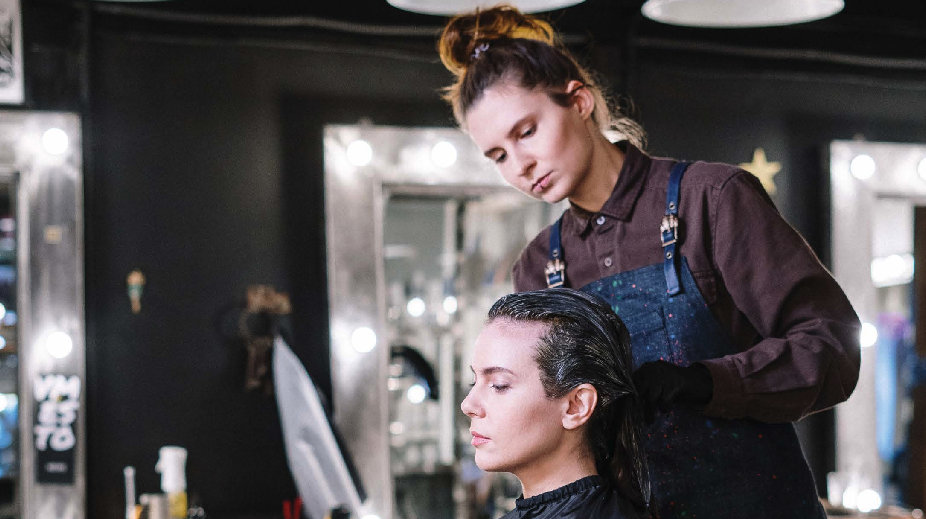
Get Professional Treatments
A hairdresser attends to a client's hair
Thanks to the university of Youtube, more people are taking on home hair care. There is certainly nothing wrong with that except it limits the kind of products you can use. Moreover, self-diagnosis of your hair may not always be accurate thus making it imperative that you consult a professional.
Keratin and hot oil treatments are examples of professional treatments. They require a skilled hand for even application and general handling of your hair during the procedure. On the upside, while these products are restricted for professional use, they are highly potent and effective. You are likely to see a dramatic change in your hair by the time you leave the salon.
It is advisable to invest in a professional visit as you begin your hair repair journey. It may save you a lot of time, money, and tears from the ravages of ‘trial and error’ approaches. Once you and your hairdresser have established a care regimen, you can alternate between professional visits and home care.

Protecting Hair Bonds
An illustration explaining hair bonds
Your hair is made up of bonds that keep the hair fiber strong as it grows. There are three types of bonds:
- Disulfide bonds
- Salt bonds
- Hydrogen bonds
The disulfide bonds are the strongest and play a major role in determining what kind of hair you have. It is these bonds that make the difference between curly, straight, or kinky hair. They can only be broken using chemicals.
Salt bonds, on the other hand, are less tenuous but still contribute to the strength of hair. They are broken when the pH level of hair changes. Any product with a pH of above 5.5 will disintegrate them.
Lastly, the hydrogen bonds are largely responsible for elasticity and also provide structural strength. They can be manipulated by both heat and water during styling.
Protecting Hair Bonds
Chemical relaxers work by breaking disulfide bonds so as to straighten hair which is naturally tightly curled. Similarly, hair color or highlights work by loosening hair bonds as the color-changing effect occurs. Suffice to say that most hair processes including styling using products will affect your bonds in varying degrees. Granted, they may be absolutely necessary but they also leave your hair weaker and prone to breakage over time.
Protecting Your Bonds
The main aim of sealing your hair bonds is to protect them from damage and maintain the strength of your hair. It is almost inevitable that various procedures may interfere with them but having them sealed with a protective layer makes all the difference.
There are products that are specifically designed to seal your bonds. Take, for instance, the Aurane balancing conditioner. It contains amino acids which are essential in maintaining the strength of hair fibers. Moreover, it creates a protective film that serves to shield your hair cuticles.

Trim Your Split Ends
A person cutting off hair tips
If you are protective of the length of your hair, you may be apprehensive about the idea of trimming it. However, by trimming off split ends, you would actually be preserving and promoting hair growth. When left unattended, they lead to:
- Tangling and breakage during combing and styling
- Hair loss
- A general untidy appearance of your hair
It is preferable that you get your split ends professionally trimmed. A hairstylist is likely to give you a more even cut and get all the stray ends. In terms of preventative measures, consider investing in strengthening conditioners and shampoos. Split ends tend to develop more when your hair fibers are weak and unprotected.
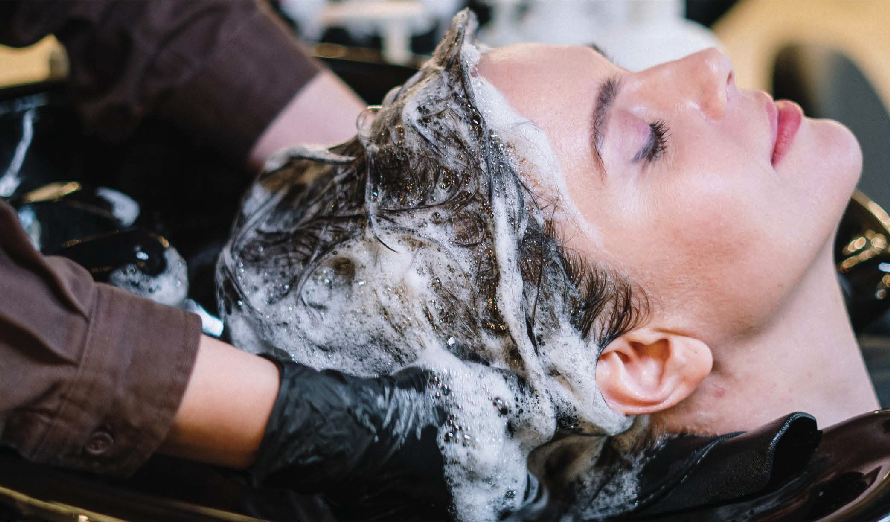
Shampoo Wisely and Well
A lady gets her hair washed
Sweat, dust, and sebum secreted by your scalp all contribute to the dirt in your hair. As a result, regular shampooing is necessary to keep your hair clean.
Whereas you need a shampoo that lathers well and gets all the dirt out, you also need to protect your hair. A shampoo that is overly harsh strips your hair and scalp of natural oils. This leads to itching and accelerates the damage to your hair by making it dry and malnourished.
Shampoos with sulfates are often brutal on hair and you would be better off avoiding them. Consider alternatives that contain more natural ingredients such as the Aurane Seaweed Anti-dandruff Shampoo. Further, shampoos also affect the pH level of your hair which subsequently affects its salt bonds. Aim for a product that will not disrupt your hair’s pH.
With regard to washing intervals, do not overdo shampooing your hair. You could alternate the days you wash it or skip a day or two between washes. Even with the right shampoo, washing your hair every day may do more harm than good.
Shampoo Wisely and Well
As the name suggests, leave-in conditioners do not get washed off the hair. The purpose of this is to allow them to keep protecting the hair during styling and everyday maintenance. They are a great way to ensure that your tresses stay nourished.
Choosing the Right Leave-in Treatment
A lady looks at a display of hair products
The problem area you are trying to address will determine the kind of leave-in treatment that your hair needs. Colored hair, for instance, may require a treatment that protects it from bleaching by the sun or by other products used on it. To repair uncolored hair, moisture infusing leave-in treatments may be ideal. You could also benefit from alternating between different nourishing treatments such as moisture and anti-frizz or a volumizing alternative.
Applying Leave-in Treatment
When you are fully done with washing your hair, pat it dry and apply your leave-in product in moderation. Overly wet hair will not absorb leave-in treatment properly. Follow up your application with a gentle massage to ensure that you spread it evenly onto your hair.
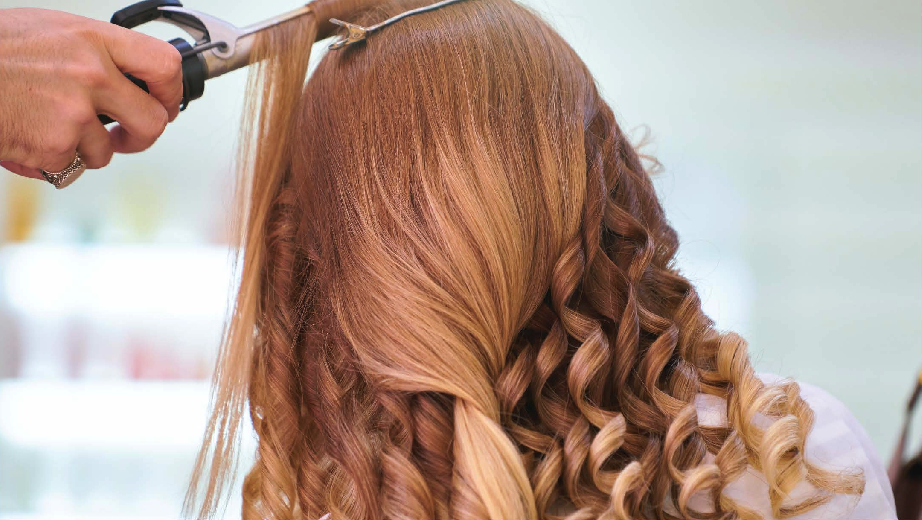
Be Careful With Heat Styling
Hair being styled using a curling iron
Heat is an effective way to dry and style your hair. It straightens out all the kinks and makes day to day management much easier. In a bid to tame your mane, you may be tempted to use high heat to bend your hair to your desired style. Unfortunately, that may result in:
- Cracks in your hair cuticle and subsequent breakage
- Dehydration
- Degradation of the keratin layer
In light of this, you may be wondering how to handle heat styling going forward. Consider:
Low Heat
When it comes to heat settings, less really is more. You can still effectively coif and curl your hair using a low heat setting on your flat iron or blow-dryer On the other hand, not all heat styling tools are made equal. There are superior grade tools that are designed to dry or style your hair without frying it. Their settings are limited to a temperature range that is conducive for your hair thereby taking out the guesswork of how much is too much.
Heat Styling Products
Applying a heat styling product as you use your curling iron or other heat tools is critical. Such products act as a buffer between your hair and the direct heat being applied to it to mitigate damage. Subjecting dry hair to heat is a sure way of damaging it.

Alternate Hairstyles
A lady with blond braids
The beauty of changing hairstyles goes beyond just making a fashion statement. When done right, it gives your hair a chance to rest. When your hair is constantly subjected to frequent manipulation in its damaged state, it may take longer to restore it to its glory.
Protective styling is one of the avenues you can explore to give your curls a break. Loose braiding and weaves are popular options that shield your hair while giving you a stylish look. If you prefer a more short term commitment, a wig may be a better idea.
Nonetheless, protective styling is not a free license to neglect your hair. Set a time limit of about 3 to 4 weeks after which you can take out the braids or weave. You can then wash and treat your tresses before you take on a new style. Further, avoid tight styles as they strain and cut hair. So much so that you may lose your hairline.
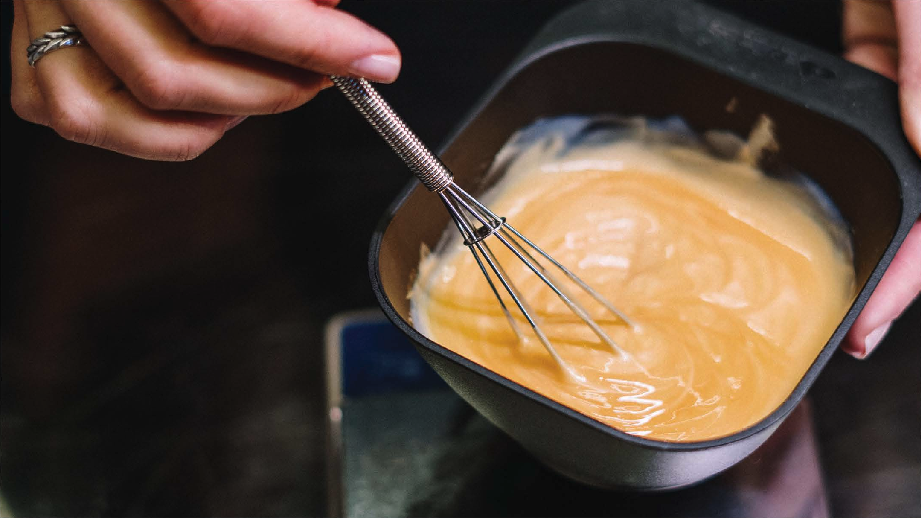
The Color Conundrum
A person whisks hair color in a black bowl
Coloring your hair alters your hair bonds and can be detrimental unless you use high-quality products. Even then, it is still crucial that you handle your hair with extra care as it is more fragile when colored.
As you endeavor to repair your hair, consider avoiding the use of color or dyes until it is in better health. Further, when you finally do make the leap to go blonde or fiery red, let your hairstylist be the one to do it. Besides getting the job done right, they can advise you on which products suit you best.
Hair Wraps
A lady wearing a purple silk hair wrap
Most people use hair wraps during bedtime or during tasks such as cooking. They are indeed beneficial but can also be harmful. When you wrap your hair too tightly, the roots of your hair around the edges are distressed and can easily break. You may also notice that over time, your hairline may begin to recede. To prevent this, bonnets with elastic bands or those that are loose-fitting may be more ideal.
In terms of fabric, silk material is recommended. Unlike other fabrics, it does not cause abrasive friction and is breathable. Silk is also less absorbent and does not dry out your hair.
Ensure to keep your hair wraps and ties clean to prevent the build of bacteria that can cause scalp irritations.
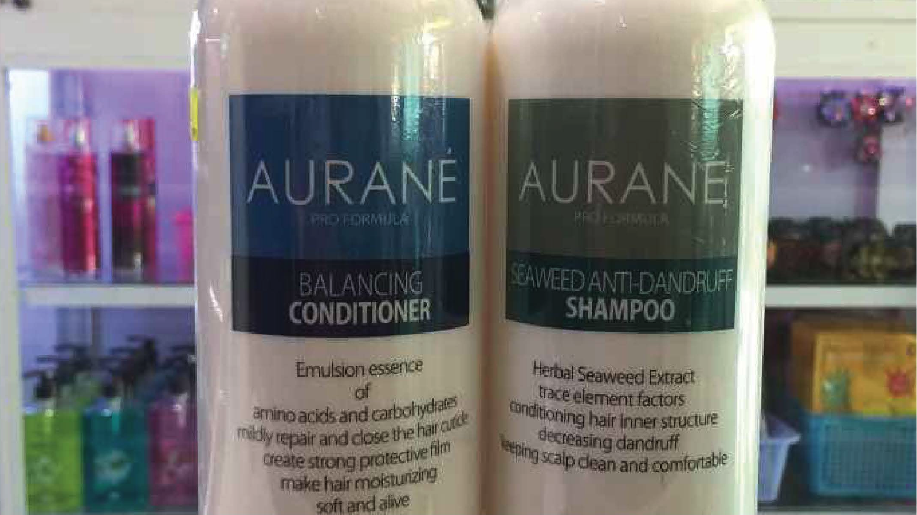
Hair Products
Aurane balancing conditioner and seaweed shampoo
The products you use are the pillar on which the health of your hair rests. No matter how diligent you are, the wrong products will not fix your hair. On the contrary, they may further the damage to irreparable levels.
It is a common misconception that keeping your hair natural directly results in healthy hair. That is not always the case. There are natural hair care products that still contain sulfates and parabens among other harmful ingredients. As such, it is more important to find out what is in the product and how effective it is. To this end, always opt for brand products that are upfront about their ingredients.
Additionally, natural ingredients will do more for your hair than synthetic ones. Consider a brand like Aurane that carries a range of products with components such as jojoba oil, ginkgo, and seaweed extract. Moreover, it covers the scope of both natural hair care and relaxed hair. The Elastic Perm formulation, for instance, contains extra protein to ensure that your bonds remain strong and cared for.
Conclusion
Hair repair is a journey that requires dedication and patience. Be cognizant of the fact that it will not happen overnight and requires you to be consistent. Eventually, you will see the fruits of your labour as your hair grows fuller and longer. That said, do not let up when you achieve your goal, keep tending to your mane.
